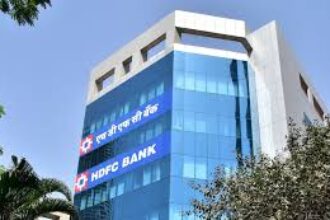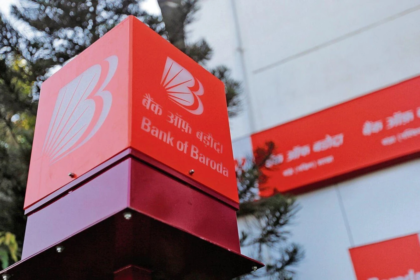On Saturday, January 4, 2025, HDFC Bank released its third-quarter business update for the October-December period of FY2024-25. The bank reported moderate growth in gross advances, a healthy rise in deposits, and a slight decline in CASA (current account savings account) deposits. However, a deeper analysis reveals challenges in maintaining loan book growth post-merger with HDFC Ltd.
HDFC Bank’s gross advances stood at ₹2,54,250 crore, reflecting a 0.9% QoQ but a decline of 3% on a YoY basis. This marks a reversal from last quarter’s 7% YoY growth in advances, signaling difficulties in sustaining momentum. The deposit base, however, showed strong growth, with total deposits rising 2.5% QoQ and 15.8% YoY, reaching ₹2,56,350 crore.
The composition of these deposits shows a shift. CASA deposits, which are low-cost funds, declined by 1.2% QoQ and 4.4% YoY to ₹87,250 crore. Time deposits, on the other hand, surged by 4.6% QoQ and 22.7% YoY to ₹1,69,100 crore. This shift contributed to a dip in the CASA ratio, which fell to 34.04% from 35.34% in the previous quarter and 37.74% a year ago.
Another concern is the drop in the credit-deposit ratio, which declined to 99.18% from 100.76% QoQ and 111.53% YoY. This decline highlights a cautious lending approach and challenges in scaling the loan book after the merger with HDFC Ltd in July 2023. The merger increased the bank’s loan book, making it difficult to sustain high growth rates from an enlarged base.
The factor contributing to muted loan growth is the performance of the corporate loan book, which saw a 10% YoY decline. Although corporate loans generally have lower yields, HDFC Bank has traditionally focused on lending to corporates with clean balance sheets and strong credit quality. However, many large corporations have reduced external debt and are funding growth through internal accruals, limiting new loan opportunities.
While the bank’s deposit book grew strongly, the inability to translate this into loan book expansion is concerning. The muted growth in advances coupled with the declining CASA ratio points to ongoing challenges in post-merger integration and liquidity management.
From an investment perspective, HDFC Bank’s strong asset quality and conservative approach make it a reliable choice for risk-averse or retirement-focused investors. However, for younger retail investors seeking growth, the current scenario with limited loan book growth may not align with their objectives.
On a positive note, HDFC Bank is pursuing regulatory approvals to acquire stakes in Kotak Mahindra Bank, AU Small Finance Bank, and Capital Small Finance Bank, which may help diversify its portfolio and strengthen its position in the long term. For now, the focus remains on addressing the challenges of scaling its loan book and restoring higher growth rates while maintaining its hallmark of strong asset quality.







